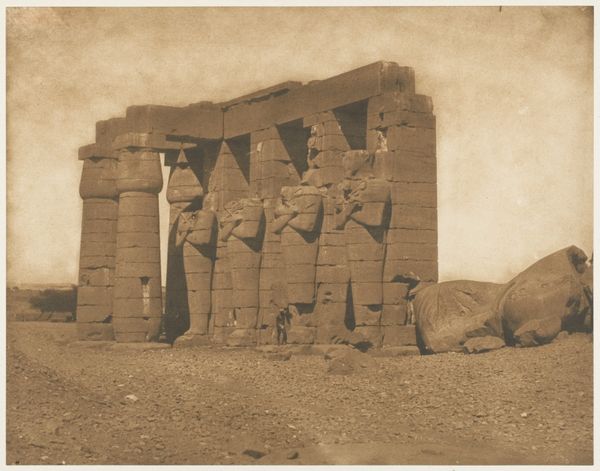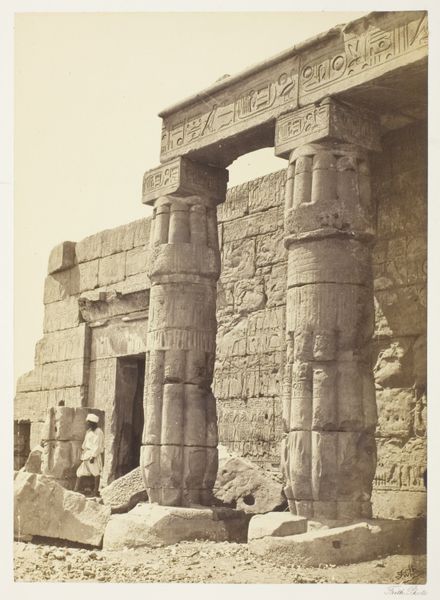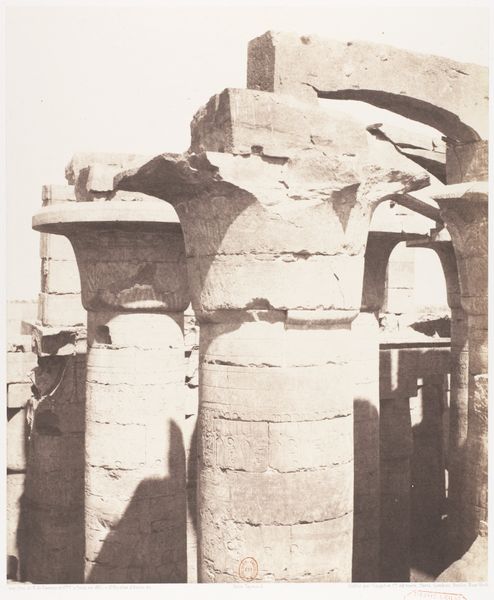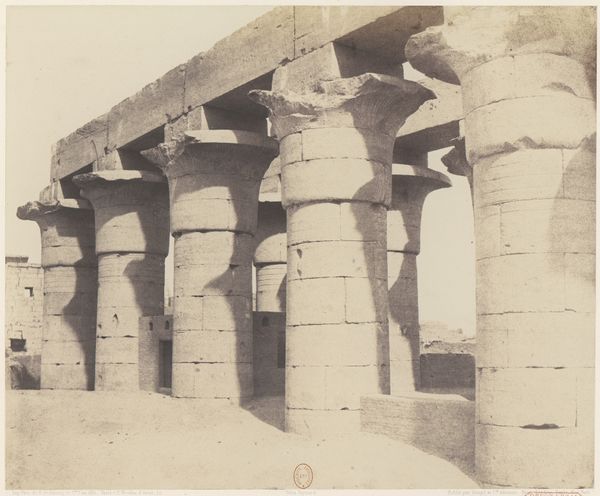
print, alabaster, photography, site-specific
#
16_19th-century
# print
#
alabaster
#
landscape
#
ancient-egyptian-art
#
photography
#
egypt
#
carved into stone
#
geometric
#
ancient-mediterranean
#
site-specific
#
men
#
history-painting
Dimensions: 15.7 × 22.5 cm (image/paper); 29.4 × 42.7 cm (album page)
Copyright: Public Domain
Curator: Standing before us, we have Francis Frith's "Pillars in the Great Hall, Karnac," captured in 1857. What strikes you most about it? Editor: The sheer scale! And the light, or rather, the way it struggles to penetrate that dense forest of stone. It's a photograph of immense power but also speaks of something lost, a past grandeur now weathered. Curator: Indeed. Frith wasn't just capturing a landscape; he was documenting a powerful cultural and historical site, part of a larger project of making Egypt and its history accessible to a Western audience. Think about the role images played in shaping colonial views. Editor: I am. And consider the immense labour involved in the quarrying, moving, carving—those columns are feats of human endeavor. I'm curious about the conditions under which the original artisans worked and how that relates to Frith's own labour in producing this photograph, processing chemicals, lugging equipment. Curator: Precisely! Frith's photograph itself is a material object produced under specific historical and economic conditions. The image became a commodity, a reproducible object feeding the Western appetite for the exotic and ancient. And note how Frith includes human figures; he does this to provide scale. Editor: That's interesting, they become another marker of the image’s socio-political positionality, like a form of constructed authenticity almost—while those weathered inscriptions demonstrate a system of visual culture predating colonialism and its technologies of capture, literally carved into the architecture. Curator: Yes, and photography here operates as a new form of inscription, one that also, like those carvings, is subject to interpretation, dissemination, and power dynamics. We’re left pondering how access and context inevitably mold meaning. Editor: Absolutely. This makes you consider the many hands, literally and figuratively, that shape not only a physical monument but also the historical narrative surrounding it.
Comments
No comments
Be the first to comment and join the conversation on the ultimate creative platform.













